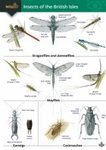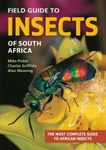![Mutualisms and Insect Conservation Mutualisms and Insect Conservation]()
Click to have a closer look
About this book
Contents
Customer reviews
Biography
Related titles
About this book
Documenting and understanding intricate ecological interactions involving insects is a central need in conservation, and the specialised and specific nature of many such associations is displayed in Mutualisms and Insect Conservation. Their importance is exemplified in a broad global overview of a major category of interactions, mutualisms, in which the interdependence of species is essential for their mutual wellbeing. The subtleties that sustain many mutualistic relationships are still poorly understood by ecologists and conservation managers alike. Examples from many parts of the world and ecological regimes demonstrate the variety of mutualisms between insect taxa, and between insects and plants, in particular, and their significance in planning and undertaking insect conservation – of both individual species and the wider contexts on which they depend. Several taxonomic groups, notably ants, lycaenid butterflies and sucking bugs, help to demonstrate the evolution and flexibility of mutualistic interactions, whilst fundamental processes such as pollination emphasise the central roles of, often, highly specific partnerships.
This compilation brings together a wide range of relevant cases and contexts, with implications for practical insect conservation and increasing awareness of the roles of co-adaptations of behaviour and ecology as adjuncts to designing optimal conservation plans. The three major themes deal with the meanings and mechanisms of mutualisms, the classic mutualisms that involve insect partners, and the environmental and conservation lessons that flow from these and have potential to facilitate and improve insect conservation practice. The broader ecological perspective advances the transition from primary focus on single species toward consequently enhancing wider ecological contexts in which insect diversity can thrive.
Contents
Part 1. The Meaning and Dynamics of Mutualisms
1 The Scope and Meaning of Mutualisms
2 Mechanisms and Maintenance
2.1 Coextinction and Coevolution: Ecological Specialisation
2.2 Stability and Integration of Mutualisms
2.3 Wider Community Stability
Part 2. Lessons from Classic Mutualisms
3 Classic Themes: Pollination Mutualisms of Insects and Plants
3.1 Introduction: Pollination Systems
3.2 Obligate Pollination Mutualisms
3.2.1 Figs and Fig-wasps
3.2.2 Yuccas and Yucca-moths
3.2.3 Other Examples
3.3 Nursery Pollination
3.4 Broader Perspective
4 Classic Themes: Ants, Plants and Fungi
4.1 Introduction to Ant-Plant Interactions
4.2 Extrafloral Nectaries
4.3 Food Bodies and Domatia
4.4 Ant Epiphytes
4.5 Ant Gardens
4.6 Myrmecocochory
4.7 Ants, Plants and Fungi
5 Classic Themes: Ants and Other Insects. Hemiptera
5.1 Introduction: Trophobiotic Associations
5.2 Ant-Hemiptera Mutualisms
6 Classic Themes: Ants and Other Insects. Lepidoptera
6.1 Introduction: Ants and Lycaenid Butterflies
6.2 Myrmecophily
7 Classic Themes: Other Insect Mutualisms
7.1 Introduction: the Remaining Variety
7.2 Termites and Fungi
7.3 Beetles and Fungi
7.4 Mullerian Mimicry
Part 3. Environmental Impacts and Insect Conservation: Lessons from Mutualisms
8 Impacts of Alien Invasive Species
8.1 Introduction
8.2 Impacts on Mutualisms
9 Exploiters of Mutualisms
9.1 Introduction: the Roles of Additional Species
9.2 Exploiters and Cheaters
9.3 Protection from Over-exploitation
9.4 Changed Communities
9.5 Nectar and Pollen Robbers
9.6 Defences against Exploitation
10 Habitat Losses and Conservation of Mutualisms
10.1 Introduction: Mutualisms in Practical Conservation
10.2 Mutualisms and Disturbance
10.3 Community Contexts
10.4 Fragmentation and Loss of Habitats
10.5 Climate change
10.6 Re-Introductions
10.7 Prospects
Customer Reviews
Biography
Emeritus Professor Tim New is an entomologist with broad interests in insect systematics, ecology and conservation. For long based at LaTrobe University, Melbourne, he has travelled widely to collect and study insects in many parts of the world, and his extensive publications on these topics include about 45 books. He is recognised globally as one of the leading advocates for insect conservation.



































